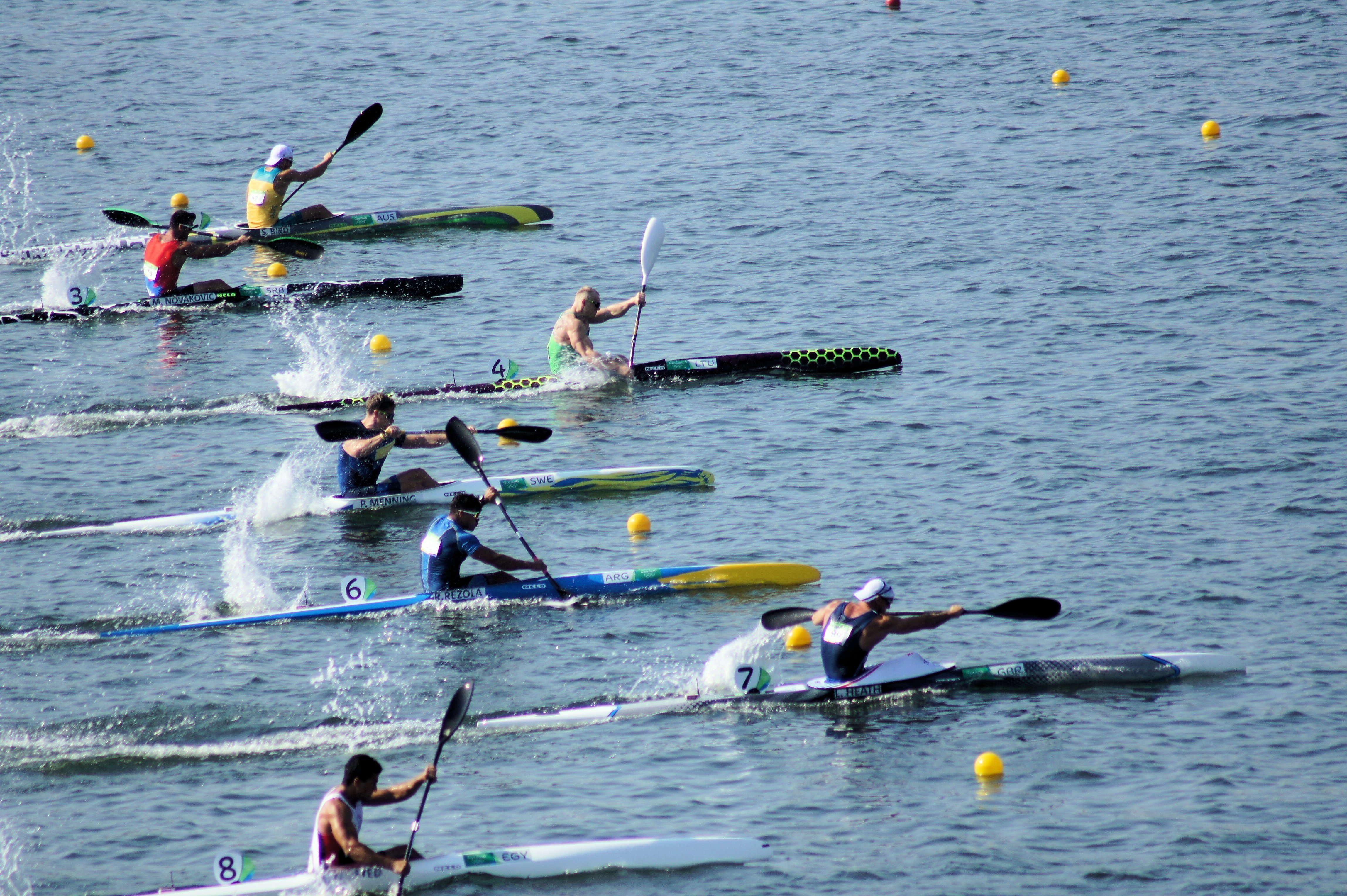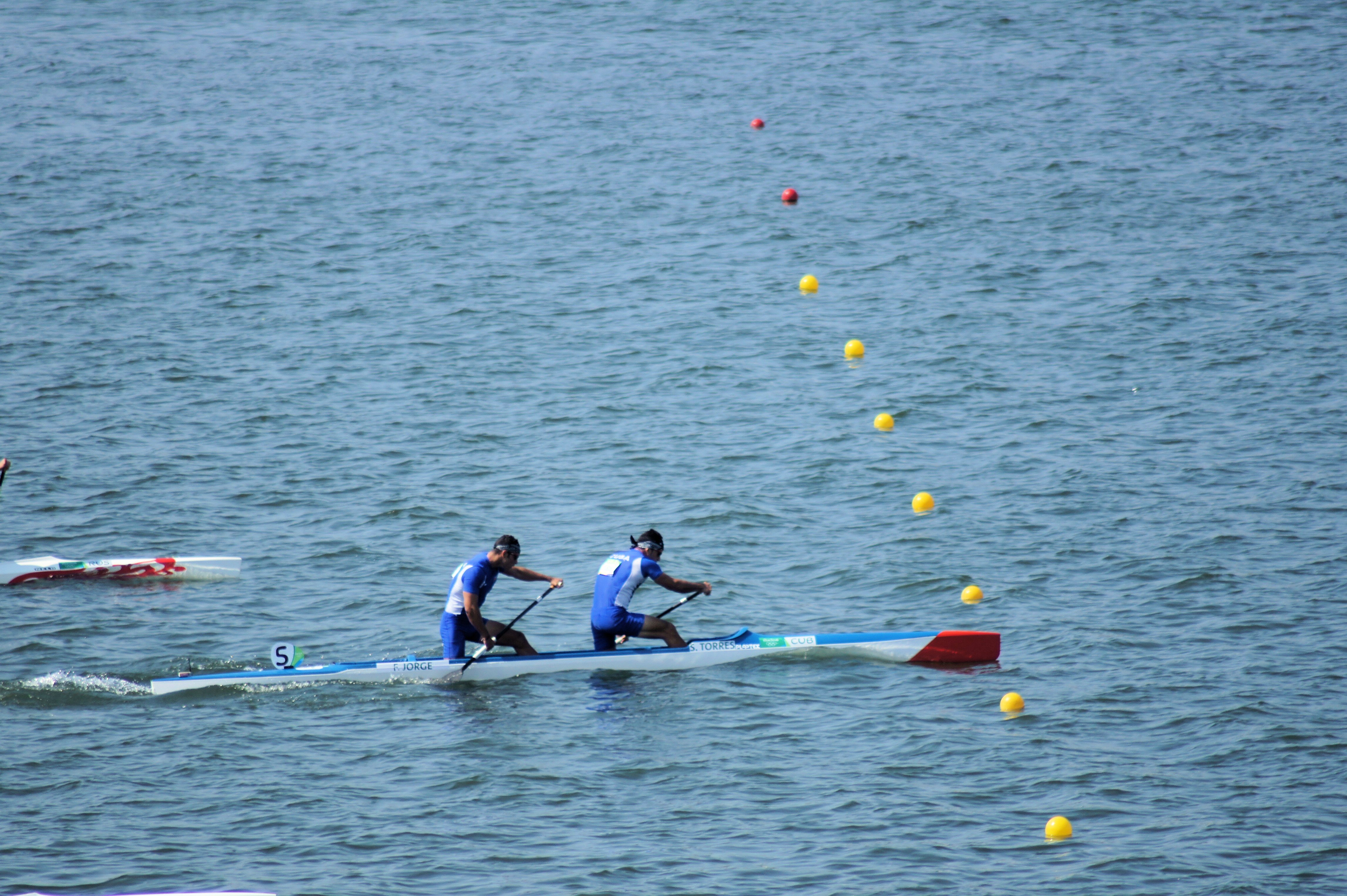Canoe sprint on:
[Wikipedia]
[Google]
[Amazon]


 Canoe sprint is a water sport in which athletes race
Canoe sprint is a water sport in which athletes race
File:Rio 2016. Canoagem de velocidade-Canoe sprint (28529187903).jpg
File:Rio 2016. Canoagem de velocidade-Canoe sprint (29147504455).jpg
File:Rio 2016. Canoagem de velocidade-Canoe sprint (29069833911).jpg
File:Rio 2016. Canoagem de velocidade-Canoe sprint (29069845691).jpg
File:Mohammad Abubakar Durrani in Asian Canoe Sprint Championship Samarqand 2013.jpg


 Canoe sprint is a water sport in which athletes race
Canoe sprint is a water sport in which athletes race canoe
A canoe is a lightweight narrow water vessel, typically pointed at both ends and open on top, propelled by one or more seated or kneeling paddlers facing the direction of travel and using a single-bladed paddle.
In British English, the ter ...
s or kayaks on calm water.
Overview
Race categories vary by the number of athletes in the boat, the length of the course, and whether the boat is acanoe
A canoe is a lightweight narrow water vessel, typically pointed at both ends and open on top, propelled by one or more seated or kneeling paddlers facing the direction of travel and using a single-bladed paddle.
In British English, the ter ...
or kayak
A kayak is a small, narrow watercraft which is typically propelled by means of a double-bladed paddle. The word kayak originates from the Greenlandic word '' qajaq'' ().
The traditional kayak has a covered deck and one or more cockpits, each s ...
. Canoe sprints are sometimes referred to as flat water racing. The distances recognized by the ICF for international canoe sprint races are 200m, 500m, and 1000m. These races take place on straight courses with each boat paddling in its own designated lane. Longer marathon races do exist, notably the 5000m (also an ICF-recognized distance) – these usually have athletes starting in a large pack at a start line before paddling around a set course with marked turning points (there are no assigned lanes). For each race a number of heats, semi-finals and a final may be necessary, depending on the number of competitors.
The sport is governed by the International Canoe Federation
The International Canoe Federation (ICF) is the umbrella organization of all national canoe organizations worldwide. It is headquartered in Lausanne, Switzerland, and administers all aspects of canoe sport worldwide. 157 countries are affiliate ...
. The International Canoe Federation is the worldwide canoeing organization and creates the standard rules for the different disciplines of canoe/kayak competition. The ICF recognizes several competitive and non-competitive disciplines of canoeing, of which Sprint and Slalom are the only two competing in the Olympic games.
On the whole, Europe has dominated the sport, winning over 90% of all available medals.
The official boats recognized by the ICF as 'International Boats' are: K1, K2, K4, C1, C2 and C4, where the number indicates the number of paddlers, “K” stands for kayak and “C” for canoe. The ICF rules for these boats define, among others, the maximum length, the minimum weight and the shape of the boats – for instance, a K1 must be 520 cm long and weighs at least 8 kg for marathons or 12 kg for sprints. Originally, width (beam) restrictions were also enforced; these were revoked in 2000, spurring a flurry of innovations in boat designs. Modern boats are usually made of carbon fiber
Carbon fiber-reinforced polymers (American English), carbon-fibre-reinforced polymers (Commonwealth English), carbon-fiber-reinforced plastics, carbon-fiber reinforced-thermoplastic (CFRP, CRP, CFRTP), also known as carbon fiber, carbon compo ...
, aramid fiber (e.g., Kevlar
Kevlar (para-aramid) is a strong, heat-resistant synthetic fiber, related to other aramids such as Nomex and Technora. Developed by Stephanie Kwolek at DuPont in 1965, the high-strength material was first used commercially in the early 1970s a ...
) with epoxy resin
Epoxy is the family of basic components or Curing (chemistry), cured end products of epoxy resins. Epoxy resins, also known as polyepoxides, are a class of reactive prepolymers and polymers which contain epoxide groups. The epoxide functional ...
, or variants of high-performance fiber-glass.
Kayak
In a kayak, the paddler is seated in the direction of travel, and uses a double-bladedpaddle
A paddle is a handheld tool with an elongated handle and a flat, widened distal end (i.e. the ''blade''), used as a lever to apply force onto the bladed end. It most commonly describes a completely handheld tool used to propel a human-powered w ...
. Kayaks have a rudder
A rudder is a primary control surface used to steer a ship, boat, submarine, hovercraft, aircraft, or other vehicle that moves through a fluid medium (generally air or water). On an aircraft the rudder is used primarily to counter adve ...
for steering and course adjustment, which is operated by the feet of the paddler in the front. The paddle used is usually a 'wing paddle' (although standard asymmetrical paddles can also be used) – wing paddles have blades which are shaped to resemble a wing
A wing is a type of fin that produces lift while moving through air or some other fluid. Accordingly, wings have streamlined cross-sections that are subject to aerodynamic forces and act as airfoils. A wing's aerodynamic efficiency is e ...
or spoon, creating lift and increasing the power and stability of the stroke. There are many variations of wing paddles, ranging from longer and narrower options for more stability throughout the entire stroke to more extreme 'teardrop' shaped paddles for a firmer application of power at the start of the stroke.
Canoe
In a canoe the paddler kneels on one knee with the other leg forward and foot flat on the floor of the boat, and paddles a single-bladed paddle on one side only with what is known as a 'J-stroke' to control the boat's direction. In Canada, a racing class exists for the C-15 or WC or "War Canoe
A war canoe is a watercraft of the canoe type designed and outfitted for warfare, and which is found in various forms in many world cultures. In modern times, such designs have become adapted as a sport, and "war canoe" can mean a type of flatwa ...
", as well as a similarly designed C-4 (which is much shorter and more squat than an 'International' C-4). An antiquated boat class is the C-7, resembling a large C4 which was debuted by the ICF with little success. For racing canoes, the blade is typically short and broad, with a 'power face' on one side that is either flat or scalloped out. The shaft will typically be longer than a tripping canoe paddle, because the kneeling position puts the paddler higher above the surface of the water. More recent designs of canoe racing paddles often have a slight bent shaft, commonly 12–14 degrees. (a concept of canoe designer Eugene Jensen in the 1960s). Many high-performance canoe paddlers prefer the feel of a wooden handle with a carbon fiber shaft and blade, while nearly all high-performance kayak paddlers use paddles made completely of carbon fiber.
Gallery
References
{{Authority control Canoeing disciplines Summer Olympic disciplines Canoe racing